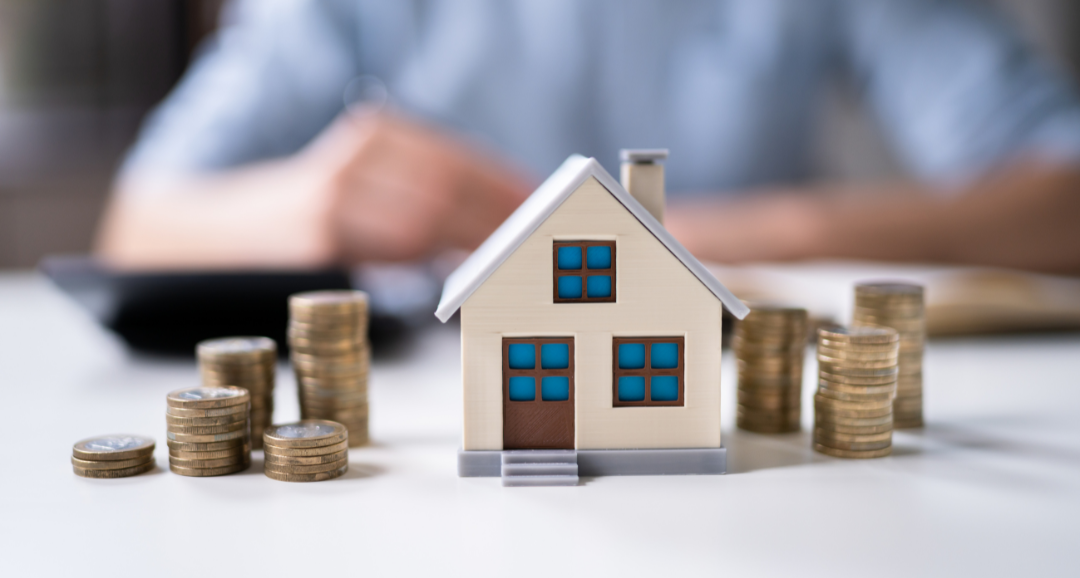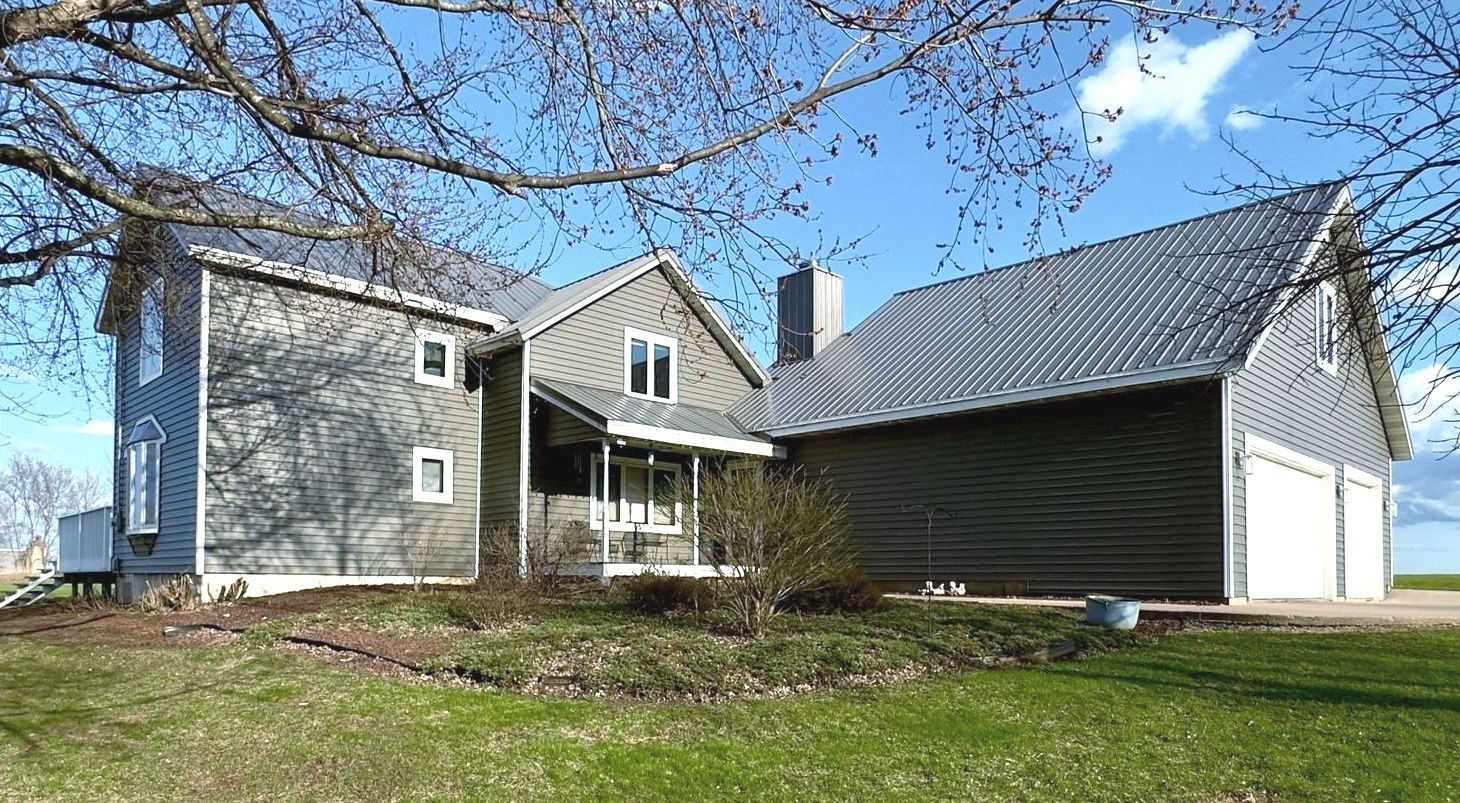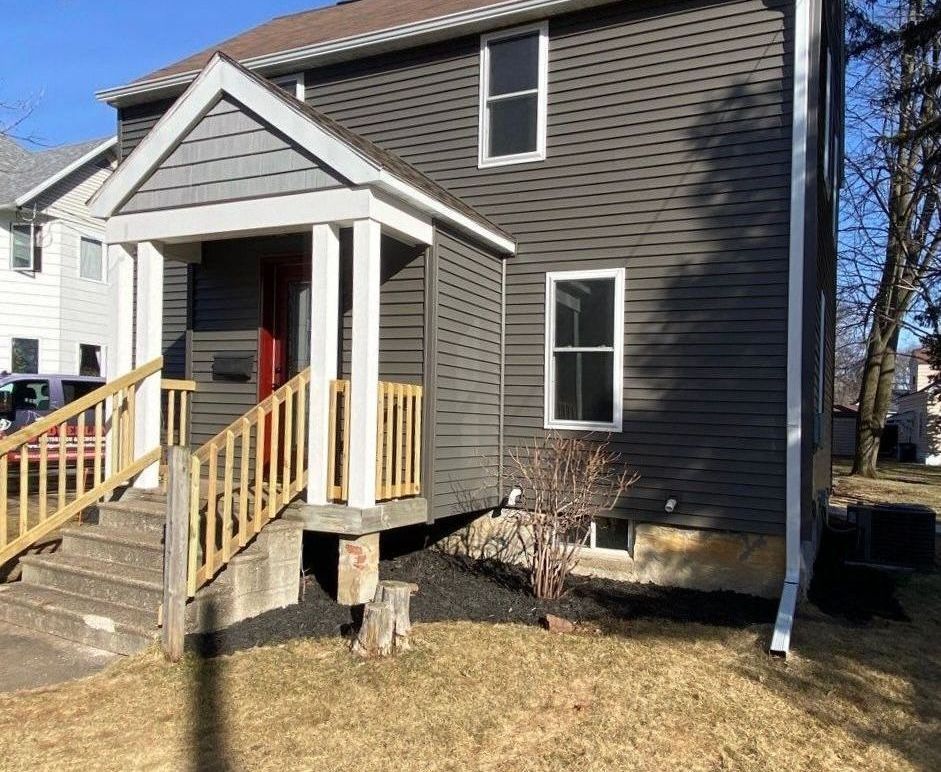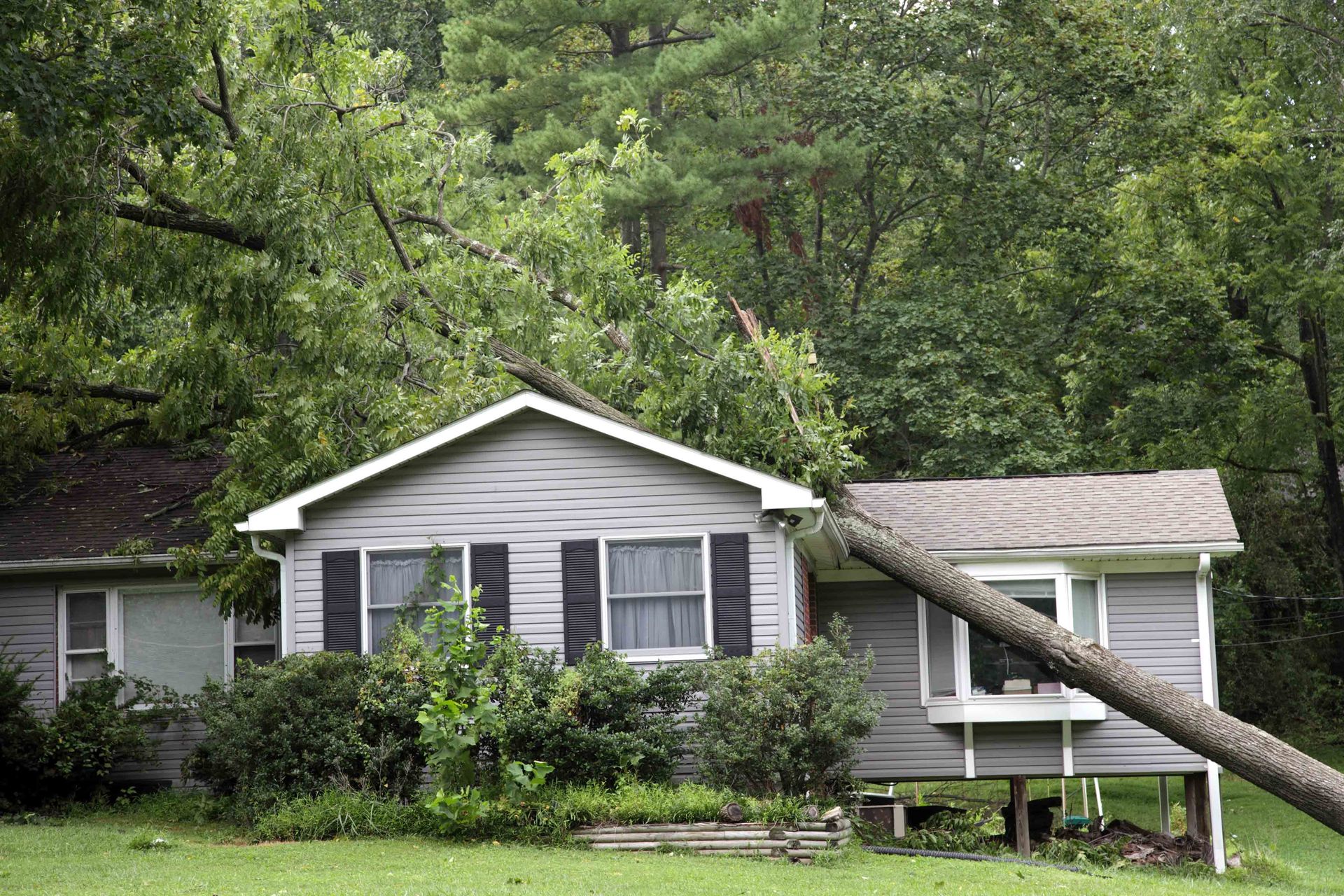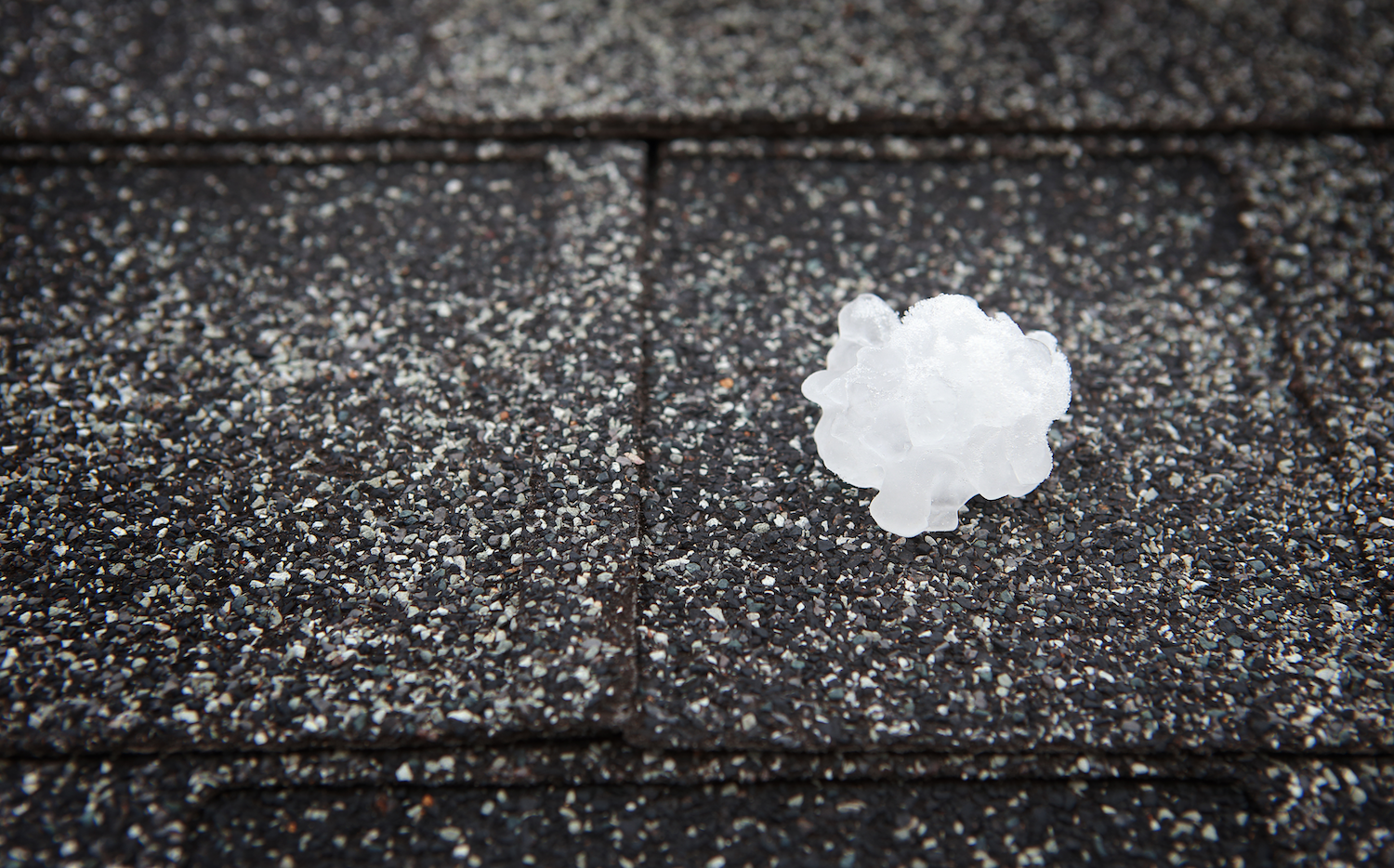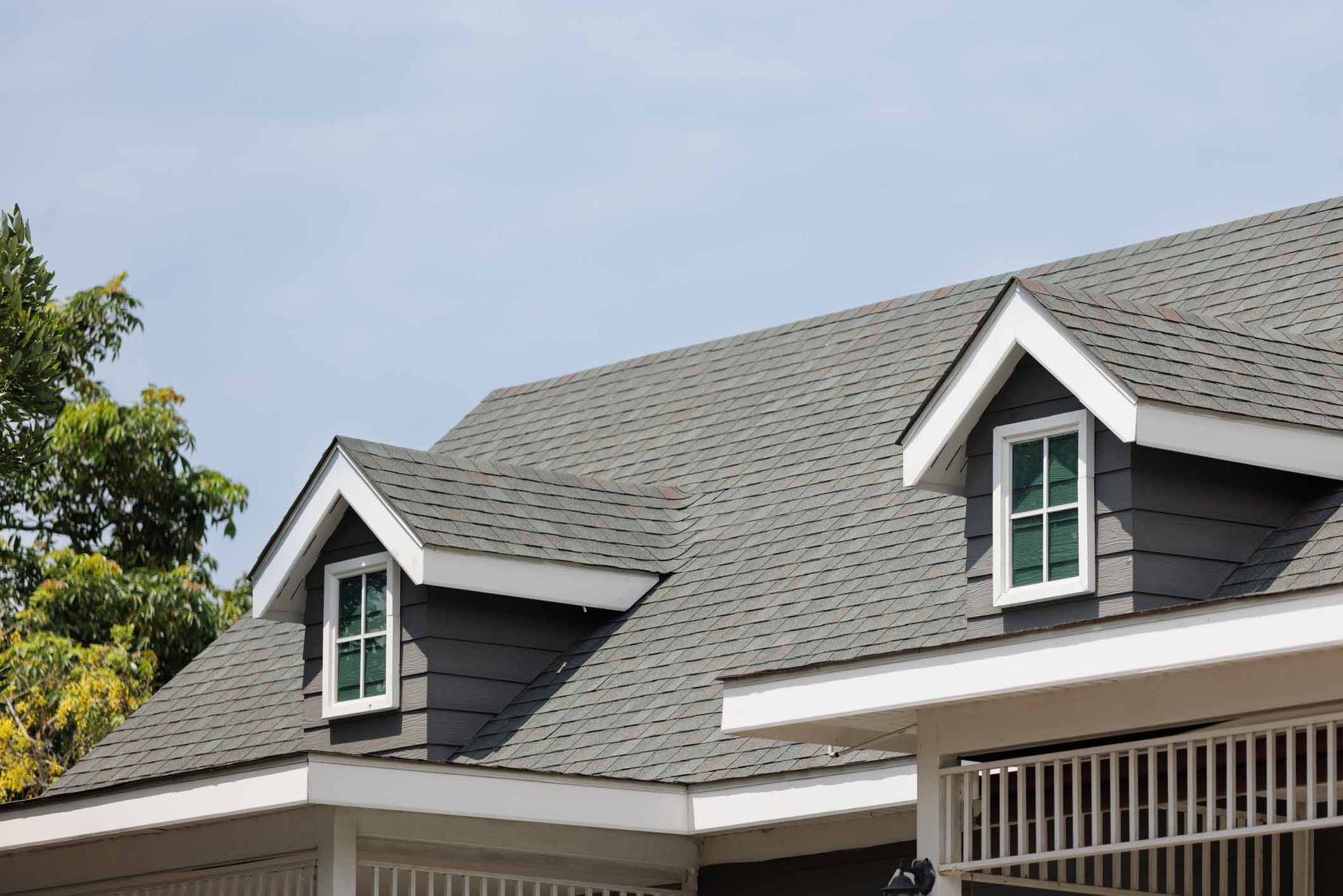Which Siding Material Is Right for Your Wisconsin Home? An In-Depth Comparison Guide.

With an array of siding options available, the task of selecting the ideal material can be daunting. At Badgerland Restoration & Remodeling, we've been serving North Central Wisconsin for over 25 years, offering expert guidance to help homeowners make confident choices in their exterior finishes. Here we have created a guide designed to assist you northern climate homeowners in navigating the complex world of siding materials, ensuring your selection aligns with your budget, climate, and personal preferences. This way you can get an overall idea of what siding is available for your home and how much each type might cost you. Below we will explore the different types of exterior finishes available, discuss the pros and cons of each, and provide an average cost of the siding.
Understanding Your Options: A Quick Overview of Siding Materials
When it comes to choosing the right siding for your home in Wisconsin, it's important to understand all your options. From vinyl and steel to brick and stucco, there are numerous materials available, each with its own set of pros and cons. In this article, we'll provide a bullet point overview of the different types of siding materials you can consider. Whether you're looking for energy-efficient options, cost-effective solutions, or sustainable materials, we've got you covered. So, let's dive in and explore the world of home exterior options.
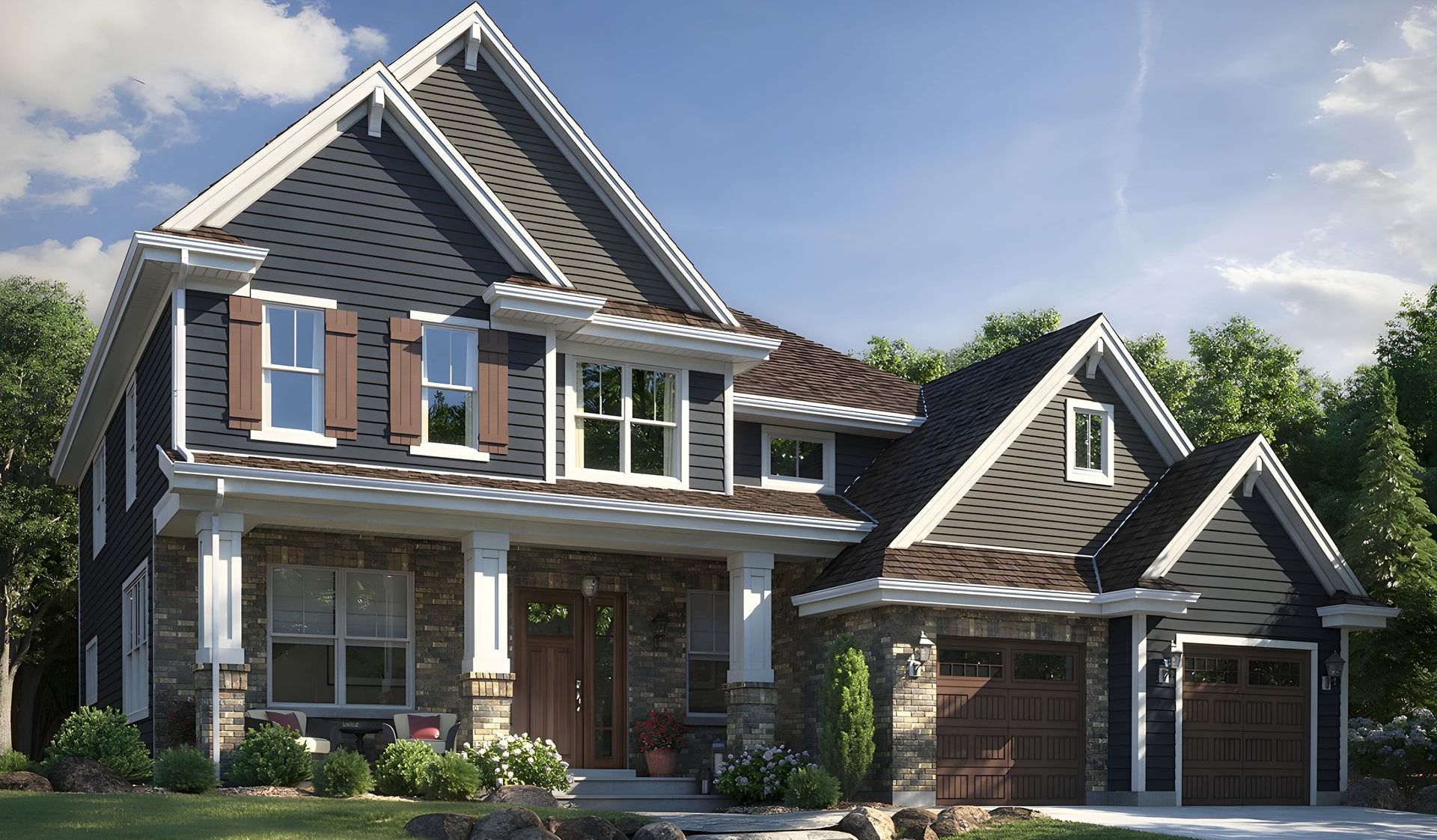
VINYL SIDING
DURABILITY AND VERSATILITY WITHOUT THE HIGH PRICE TAG
Vinyl siding has earned its reputation as one of the most popular choices for homeowners in Wisconsin looking to revamp the exterior of their homes, and it's not without good reason. Offering an impressive combination of durability, affordability, and versatility, vinyl siding has become a go-to option for those seeking a cost-effective yet attractive siding solution.
PROS:
- Affordability: Vinyl siding is known for its affordability, making it an attractive choice for budget-conscious homeowners. Its lower initial cost compared to some other siding materials allows you to invest in other home improvement projects or allocate your budget elsewhere.
- Low Maintenance:
Vinyl siding requires minimal maintenance. Unlike materials that need regular painting or staining, vinyl's color is integrated throughout the panels, eliminating the need for repainting. Occasional cleaning with a hose and mild detergent is typically sufficient to keep it looking fresh.
- Durability: Vinyl siding is highly resistant to moisture, mold, and rot, making it well-suited for Wisconsin's variable climate. It can withstand rain, snow, and humidity without deteriorating or corroding.
- Design Options:
Vinyl siding comes in a wide range of styles, colors, and textures. Whether you prefer a traditional look or a more modern aesthetic, you can find vinyl siding that complements your home's design.
- Insulation Capabilities: While vinyl siding itself may not offer the same level of insulation as some materials, it can be paired with additional insulation layers. This combination can improve your home's energy efficiency, helping to keep indoor temperatures stable and reducing heating and cooling costs.
- Quick Installation: Vinyl siding is relatively quick and straightforward to install, which can save on labor costs. Efficient installation is particularly valuable in Wisconsin, where weather conditions can be unpredictable.
- Readily Available: Vinyl siding is widely available and accessible, ensuring that you can find the right style and color for your project with ease.
- Eco-Friendly Options: Some vinyl siding products incorporate recycled materials, aligning with eco-conscious homeowners' values. Additionally, vinyl siding's energy-saving properties can reduce greenhouse gas emissions over time.
- Lightweight: Vinyl siding is lightweight, making it easier to handle during installation. This characteristic can streamline the installation process and reduce the need for heavy equipment.
- Curb Appeal: Vinyl siding can enhance your home's curb appeal, potentially increasing its resale value. Its clean and fresh appearance is appealing to many buyers.
CONS:
- Winter Cold and Summer Heat: Wisconsin experiences both harsh winters and hot summers. Vinyl siding can be susceptible to temperature-related issues. In extremely cold weather, it may become more brittle and prone to cracking upon impact. In hot weather, it can expand and contract, potentially leading to warping or buckling if not properly installed.
- Limited Insulation: Standard vinyl siding may not provide the same level of insulation as some other materials, such as foam-backed or insulated siding. In a state with cold winters like Wisconsin, homeowners may need to invest in additional insulation or other energy-saving measures to maintain comfortable indoor temperatures and reduce heating costs.
- Moisture Management: Proper installation and sealing are crucial to prevent moisture infiltration behind vinyl siding. Moisture trapped beneath the siding can lead to mold, rot, and structural issues over time, which is a concern in Wisconsin's climate with its freeze-thaw cycles.
- Hail and Impact Damage:
Wisconsin is no stranger to hailstorms, which can cause significant damage to vinyl siding. While vinyl is resilient to most everyday impacts, it can dent, crack, or chip when exposed to hail or other heavy objects.
- Environmental Impact: The production and disposal of vinyl siding raise environmental concerns. Vinyl is a plastic-based material, and its manufacturing process involves the use of non-renewable resources. Additionally, the disposal of vinyl siding can pose challenges, as it is not biodegradable. Homeowners concerned about sustainability may prefer more eco-friendly siding alternatives.
- Color Fade: Over time, vinyl siding can fade or change color due to prolonged exposure to UV rays. This can affect the appearance of your home, and replacement or painting may be necessary to maintain the desired aesthetic.
- Maintenance Requirements: While vinyl siding is relatively low maintenance, it does require periodic cleaning to prevent the buildup of dirt, mildew, and algae. Cleaning may be more frequent in areas with heavy precipitation or high humidity.
- Lifespan and Durability: While vinyl siding is durable, it may not have the same longevity as some other materials like brick or stucco. Over time, it can become brittle, fade, or show signs of wear, which may necessitate replacement.
- Professional Installation: Proper installation by experienced professionals is essential to ensure vinyl siding's longevity and performance. Improper installation can lead to issues like water infiltration, warping, or poor alignment.
COSTS: Being the lowest on the costs scale, vinyl siding with quality professional installation averages at about $10 per square foot depending on the style and thickness you choose to use. It's also important to plan for a bit extra for waste. If you have a lot of bump-outs, windows and doors, or dormers and gable ends, then you can expect at least an extra 15% in waste just to trim the pieces of vinyl siding to fit all those areas.
In summary, vinyl siding offers a cost-effective and low-maintenance solution that can withstand Wisconsin's diverse climate. Its versatility, energy efficiency potential, and ease of installation make it a practical choice for homeowners seeking an attractive and budget-friendly siding option. When properly installed and maintained, vinyl siding can provide long-lasting protection and enhance the overall comfort and value of your home. It's a practical option that can enhance your home's curb appeal while requiring minimal maintenance. However, it's crucial to consider its potential downsides, such as limited insulation and susceptibility to damage, before making your siding decision. By weighing these factors against your specific needs and priorities, you can determine whether vinyl siding is the right choice for your Wisconsin home.
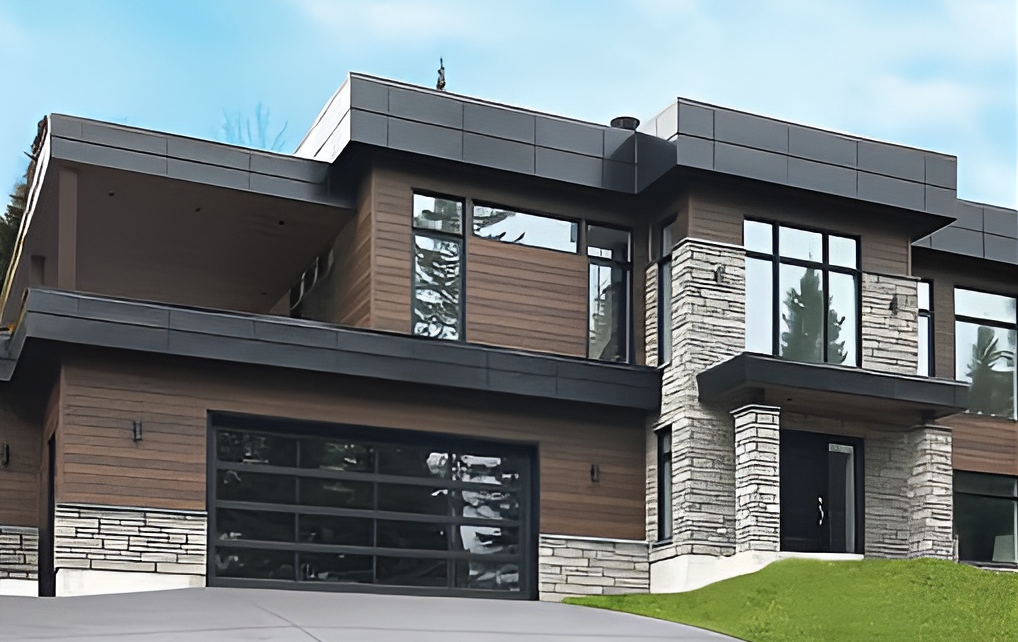
STEEL SIDING
STRENGTH, DURABILITY, AND LASTING ELEGANCE
Steel siding is a robust and enduring choice for homeowners seeking a balance between durability and visual appeal. It boasts a range of benefits that make it a compelling option for those looking to protect and beautify their homes.
PROS:
- Exceptional Durability: One of the most prominent advantages of steel siding is its unyielding durability. Crafted from galvanized or coated steel, this siding material can stand up to the harshest weather conditions Wisconsin has to offer. From freezing winters to scorching summers, steel siding remains steadfast, protecting your home for decades.
- Resistant to the Elements: Steel siding is highly resistant to moisture, preventing issues like rot, mold, or mildew. It doesn't crack, warp, or peel, ensuring that it maintains its sleek appearance year after year. In a state known for its varying climate, the resilience of steel siding is a valuable asset.
- Low Maintenance: Steel siding is virtually maintenance-free. Unlike materials that require frequent painting or staining, steel siding retains its vibrant color and sheen with minimal effort. A simple rinse with a hose can keep it looking fresh for years. This means more time enjoying your home's beauty and less time on upkeep.
- Protection from Pests and Fire: Steel siding is naturally resistant to pests like termites, providing an added layer of security for your home. Moreover, it boasts excellent fire resistance properties, which is particularly crucial in areas where wildfires can pose a threat.
- Sleek and Modern Aesthetics: Steel siding's sleek appearance adds a modern touch to your home's exterior. It's available in a variety of profiles and finishes, allowing you to achieve the aesthetic you desire, whether it's a contemporary look or a more traditional style.
- Impact Resistance:
Steel siding is highly impact-resistant, making it less susceptible to dents, cracks, or damage from hail, debris, or flying objects. This resilience ensures the siding maintains its appearance and structural integrity.
- Easy Installation: Steel siding is relatively easy to install, particularly for experienced professionals. This means a quicker and more efficient installation process compared to some other siding materials.
- Lasting Investment: When properly installed and maintained, steel siding can last for decades. Its longevity can result in long-term cost savings and peace of mind.
- Curb Appeal: Steel siding can enhance your home's curb appeal and potentially increase its resale value. Its modern and sleek appearance appeals to many buyers.
- Customization: Steel siding can be customized to fit your home precisely, ensuring a seamless and visually appealing finish.
- Energy Efficiency Options: Manufacturers offer insulated steel siding options, providing an additional layer of insulation for your home. This can result in reduced heating and cooling costs over time, making it a cost-effective choice.
- Environmentally Responsible: Steel is a recyclable material, which means that it can be repurposed at the end of its lifespan. This aligns with eco-conscious homeowners' values, as it reduces the environmental impact associated with home renovations.
CONS:
- Higher Initial Investment: Steel siding can be more expensive upfront compared to some other siding materials. While it offers long-term value, the initial cost may be a deterrent for homeowners with budget constraints.
- Denting & Scratching: Steel siding, although durable, can be susceptible to dents and scratches, especially in areas prone to hailstorms or other severe weather events. While this doesn't necessarily compromise its structural integrity, it can affect its appearance.
- Potential for Rust: Despite being corrosion-resistant, steel siding can still develop rust if its protective coatings are compromised. Regular inspections and maintenance, including touch-up painting, may be necessary to prevent rust from spreading.
- Heavier than Some Materials: Steel siding is heavier than materials like vinyl or aluminum. This additional weight may necessitate reinforcement of your home's structure and foundation, potentially increasing installation costs.
- Limited Color Options: While steel siding comes in a variety of colors, the selection may be more limited compared to some other materials, potentially limiting your design choices.
- Environmental Considerations: While steel is a recyclable material, the recycling process can be energy-intensive. Additionally, the production of steel siding may involve emissions and environmental impacts that some eco-conscious homeowners may want to consider.
- Installation Challenges: Steel siding installation can be more complex than some other siding materials, requiring precise measurements, special tools, and experienced professionals. Improper installation can lead to performance issues.
- Professional Installation Required: To ensure optimal performance and longevity, steel siding should be installed by experienced professionals. This may add to the overall project cost.
- Aesthetic Preferences:Steel siding may not be the ideal choice for homeowners seeking a specific architectural style or aesthetic, such as a more rustic or traditional appearance.
- Temperature Sensitivity: Steel siding can expand and contract with temperature
COSTS: For good quality steel and professional installation, you can expect a price in the ballpark of $15 per square foot. Don't forget to factor in the extra 10 - 15% for waste.
Steel siding combines unmatched durability with sleek aesthetics, making it an excellent choice for siding your home in Wisconsin. Its resistance to the elements, low maintenance requirements, and eco-friendly attributes are particularly attractive in a region known for its diverse and sometimes harsh climate. Whether you prioritize longevity, protection, or modern aesthetics, steel siding can enhance your home's exterior while providing peace of mind that it will endure for years to come.
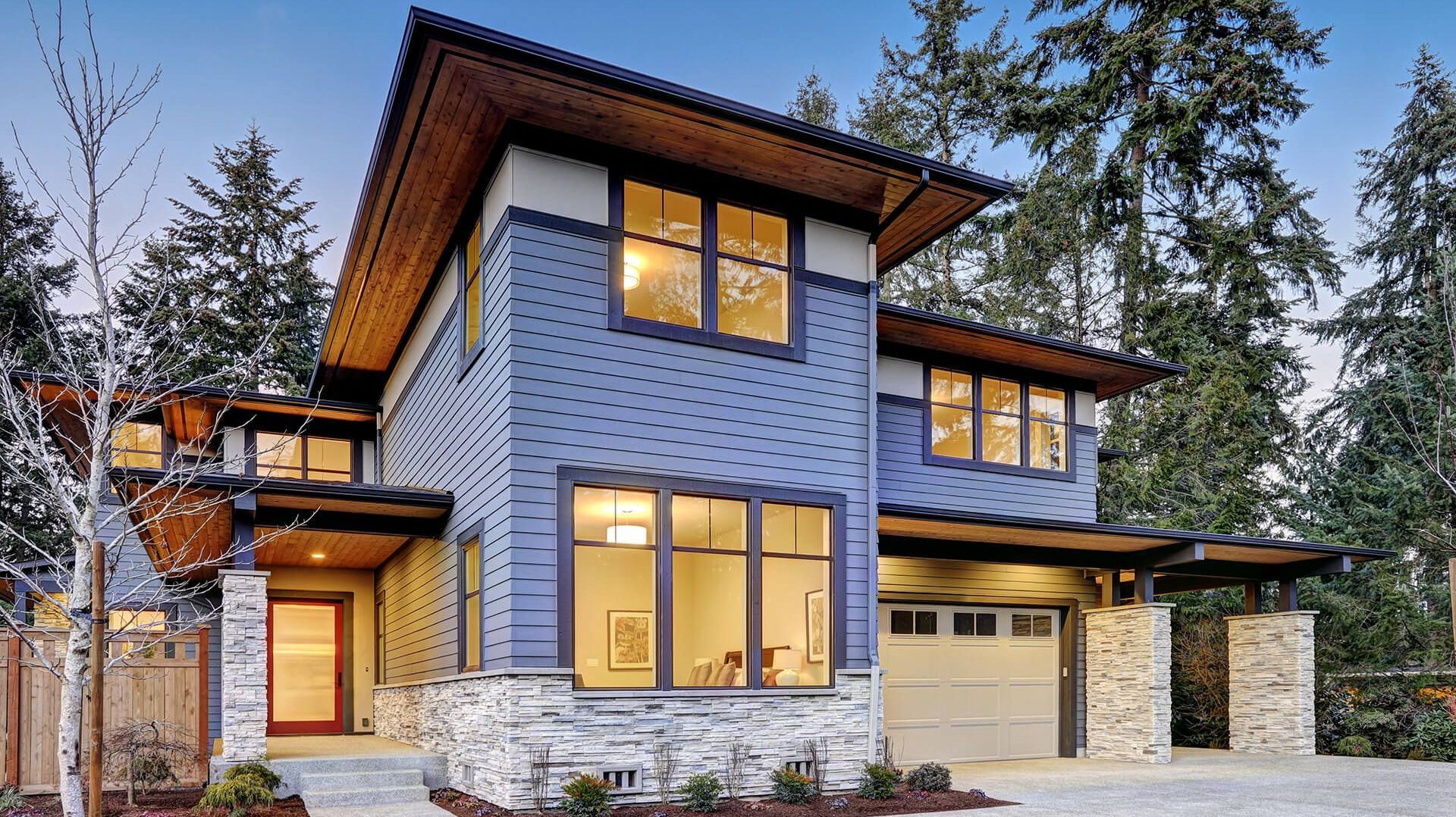
ALUMINUM SIDING
LIGHTWEIGHT RESILIENCE AND TIMELESS APPEAL
Aluminum siding is a durable and versatile choice that has been trusted by homeowners for decades. With its unique combination of strength, lightness, and aesthetic flexibility, aluminum siding offers several compelling reasons to consider it for siding your home.
PROS:
- Durability in Diverse Conditions: One of the standout features of aluminum siding is its exceptional durability. Crafted from aluminum sheets, this siding material is naturally resistant to corrosion and rust, making it ideal for withstanding the diverse and sometimes challenging weather conditions of Wisconsin. From the icy grip of winter to the heat of summer, aluminum siding maintains its structural integrity, providing long-lasting protection for your home.
- Impact Resistant: While aluminum siding is not completely immune to dents or dings, it is more impact-resistant than some other materials. It can withstand moderate impacts without significant damage.
- Resistance to Pests and Decay: Aluminum siding is naturally resistant to pests, such as termites, which can be a common concern for homeowners. Furthermore, it does not rot or decay, ensuring that it retains its appearance and protective qualities for years to come. This is especially important in regions like Wisconsin, where wood-destroying insects and moisture-related issues can be problematic.
- Fire Resistance: Aluminum siding has excellent fire resistance properties, offering an added layer of protection in areas prone to wildfires.
- Lightweight and Easy Installation: Aluminum siding's lightweight nature simplifies the installation process. This means quicker and more efficient installation, which can be particularly advantageous for homeowners seeking to complete their siding project in a timely manner. Additionally, its lighter weight reduces the stress placed on your home's structure.
- Low Maintenance: Aluminum siding is virtually maintenance-free. It does not require painting or staining, and regular cleaning with a hose and mild detergent is usually sufficient to keep it looking fresh.
- Cost-Effective Choice: Aluminum siding is often a cost-effective option for homeowners. Its affordability makes it accessible to a wide range of budgets, making it an attractive choice for those looking to enhance their home's exterior without breaking the bank.
- Lasting Investment: When properly installed and maintained, aluminum siding can last for decades, providing long-term cost savings and peace of mind.
- Design Options: Aluminum siding is available in various styles, colors, and textures, allowing homeowners to personalize their homes' exteriors to suit their preferences. Whether you prefer a classic or contemporary look, aluminum siding can adapt to your vision, providing timeless curb appeal.
- Customization for a Tailored Look: Aluminum siding can be customized to fit your home precisely, ensuring a seamless finish. This could also potentially increase your homes' resale value as its cleans and modern appearance appeals to many buyers.
- Environmentally Conscious: Aluminum is a recyclable material, which means it can be repurposed at the end of its useful life. This aligns with the values of homeowners seeking eco-friendly siding options, as it reduces the environmental impact associated with renovation projects.
- Potential for Insulation: Some aluminum siding products come with added insulation options, which can improve your home's energy efficiency. This can result in cost savings on heating and cooling bills, especially in Wisconsin's cold winters.
CONS:
- Vulnerability to Dents and Scratches: Aluminum siding is relatively soft compared to some other siding materials, which makes it prone to dents, dings, and scratches, particularly when exposed to hail or other heavy objects.
- Moderate Expense: While not as costly as some premium siding options, aluminum siding tends to be more expensive than vinyl siding. The initial investment may be higher, and the overall cost could impact your budget.
- Limited Insulation: Aluminum siding provides limited insulation on its own. In a state with cold winters like Wisconsin, homeowners may need to invest in additional insulation or energy-saving measures to maintain comfortable indoor temperatures and reduce heating costs.
- Environmental Impact: Aluminum production can have environmental consequences, and the recycling process may be less energy-efficient compared to other materials. Some eco-conscious homeowners may prefer more sustainable siding options.
- Color Fading: Over time, aluminum siding can experience color fading due to prolonged exposure to UV rays. This may require repainting or recoating to maintain the desired appearance.
- Limited Design Choices: While aluminum siding comes in various styles and colors, the selection may be more limited compared to some other materials, potentially limiting your design choices.
- Regular Cleaning: Aluminum siding may require periodic cleaning to remove dirt, mildew, or algae. Frequent precipitation or high humidity can lead to more frequent cleaning needs.
- Corrosion Risk: Aluminum can corrode over time, especially in regions with high humidity or near bodies of water. Regular maintenance and protective coatings may be necessary to prevent corrosion.
- Aging: Aluminum siding may not age as gracefully as some other materials. Over time, it may develop a chalky appearance or show signs of wear, potentially requiring refinishing or replacement.
- Professional Installation: To ensure proper performance and longevity, aluminum siding should be installed by experienced professionals. Incorrect installation can lead to issues such as water infiltration or poor alignment.
COST: Aluminum siding and expert installation will run you about $20 per square foot. Be sure to factor in a little extra for waste to. As with steel and vinyl, the more angles, corners, and windows or doors you have, the more waste you need to account for.
In summary, aluminum siding is a durable, low-maintenance, and fire-resistant siding option that can thrive in Wisconsin's challenging climate. Its durability, energy efficiency potential, and eco-friendly options make it a practical choice for homeowners seeking a secure and long-lasting siding material. When correctly installed and maintained, aluminum siding provides enduring protection and elevates the overall durability and value of your home. Despite all the wonderful qualities, it's essential to still consider the potential downsides when choosing it for your home in Wisconsin. Assess your budget, climate conditions, maintenance preferences, and aesthetic goals, and consult with a reputable siding contractor, like Badgerland Restoration & Remodeling, Inc., who can provide expert guidance on the best siding material for your specific needs.
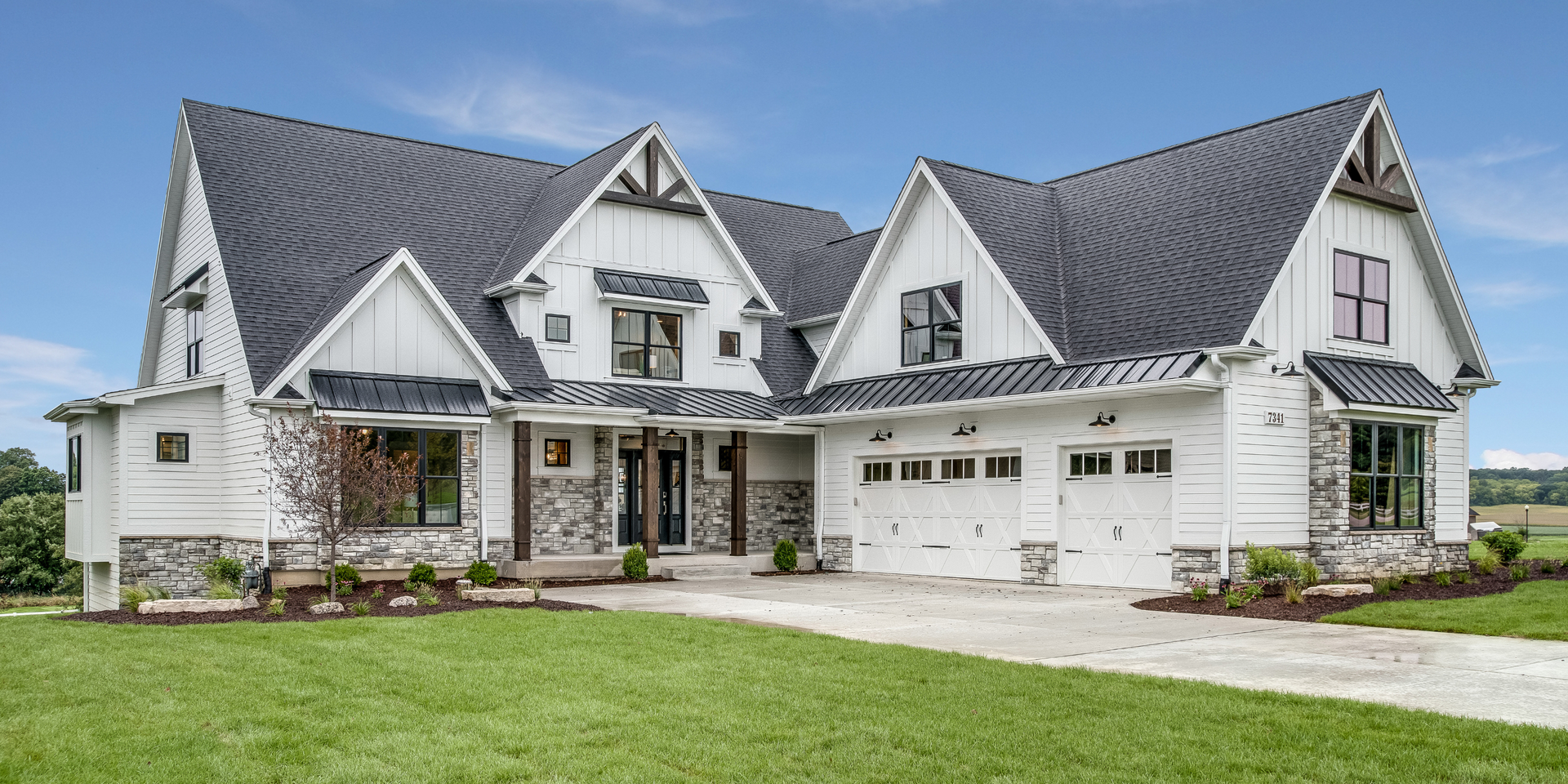
VENEER SIDING
BEAUTY & LUXURY FOR A FRACTION OF THE PRICE
Veneer siding is a popular choice among homeowners seeking to achieve the look of natural stone or brick without the associated costs and weight. Offering a harmonious blend of aesthetics and affordability, veneer siding has emerged as a compelling choice for those looking to enhance their homes' exteriors.
PROS:
- Natural Appearance: Veneer siding replicates the authentic look of natural stone or brick, providing your home with a timeless and elegant appearance. It adds curb appeal and can enhance the overall aesthetics of your property.
- Affordable Luxury:
One of the standout features of veneer siding is its ability to deliver the luxurious appearance of natural stone or brick at a fraction of the cost. This is particularly advantageous for homeowners who appreciate the beauty of these premium materials but are mindful of their budget. Veneer siding allows you to achieve a high-end, sophisticated look without breaking the bank.
- Versatility in Design:
Veneer siding is incredibly versatile, offering a wide range of styles, colors, and textures. Whether you aspire to recreate the rustic charm of traditional stone cottages or prefer the sleek modernity of brick facades, veneer siding can adapt to your vision. This flexibility empowers homeowners to express their unique aesthetic preferences, ensuring their homes stand out with individuality.
- Durability and Low Maintenance: Veneer siding provides the durability and low maintenance benefits of traditional masonry materials without the weight and cost. It is inherently resistant to moisture, mold, and rot, ensuring that it maintains its elegance over time. Additionally, its easy-care nature means minimal upkeep, allowing you to enjoy the beauty of your home's exterior without the constant need for painting or sealing.
- Moisture Management: When properly installed, veneer siding offers excellent moisture resistance. It can effectively protect your home from rain, snow, and humidity, preventing moisture-related issues.
- Energy Efficiency Options:
Many manufacturers now offer insulated veneer siding, which enhances your home's energy efficiency. This additional layer of insulation can regulate indoor temperatures, resulting in reduced heating and cooling costs over time. For homeowners in states like Wisconsin, where extreme temperatures can be a challenge, this added insulation can provide year-round comfort and savings.
- Environmentally Friendly Options:
For eco-conscious homeowners, veneer siding is available with environmentally friendly features. Some options use recycled materials in their production, aligning with sustainability goals and reducing the environmental impact of your home renovation project.
- Lightweight Construction: Unlike traditional masonry materials, veneer siding is lightweight. This not only simplifies installation but also reduces the stress on your home's structure, making it a more manageable and cost-effective choice for siding projects.
CONS:
- Limited Insulation: Veneer siding provides limited insulation compared to some other siding materials. In Wisconsin's cold winters, this can lead to reduced energy efficiency and potentially higher heating costs.
- Moisture Infiltration: Proper installation and moisture management are crucial with veneer siding. If moisture becomes trapped behind the veneer, it can lead to mold growth, rot, and structural issues, particularly in regions with significant precipitation and freezing temperatures.
- Installation Complexity: Installing veneer siding correctly can be more complex and time-consuming than some other siding materials. It often requires skilled professionals to ensure the veneer is securely attached and properly aligned.
- Cost Considerations: While veneer siding is more affordable than genuine stone or brick, it is generally more expensive than some other siding options like vinyl or aluminum. The initial cost may be higher, impacting your budget.
- Aesthetic Limitations: The appearance of veneer siding can vary, and achieving a consistent and natural look may require careful selection and placement of individual veneer pieces. This can be a more meticulous and time-intensive process.
- Cleaning and Maintenance: Veneer siding may require periodic cleaning to prevent the buildup of dirt, mildew, or algae, especially in areas with heavy precipitation or high humidity. Maintenance needs can vary based on the specific veneer material used.
- Weight Considerations: While veneer siding is lighter than solid masonry, it still adds weight to your home's exterior. It's essential to ensure that your home's structure can support the additional load.
- Limited Color Options: Veneer siding may have a more limited range of color options compared to some other materials, potentially restricting your design choices.
- Repair Challenges: If damage occurs to individual veneer pieces, repairs can be more challenging and may require specialized skills and materials to match the existing veneer.
- Customization Costs: Customizing veneer siding to fit unique architectural elements or specific design preferences can add to the overall cost of the project.
COSTS: The prices for this fashionable option greatly depends on what look you're going for and installation complexity. With all the many different styles available, you can expect the cost to be anywhere from $20 - $30 per square foot plus extra for waste.
Veneer siding offers an enticing blend of aesthetics, affordability, and ease of maintenance, making it an excellent choice. Whether you desire the timeless elegance of stone or the enduring appeal of brick, veneer siding empowers you to create for adding a stunning exterior to your home that reflects your personal style. Although veneer siding offers the aesthetic appeal of natural stone or brick at a lower cost, it comes with considerations related to insulation, installation complexity, maintenance, and cost. Homeowners in Wisconsin should carefully assess their budget, climate conditions, maintenance preferences, and aesthetic goals when choosing veneer siding.
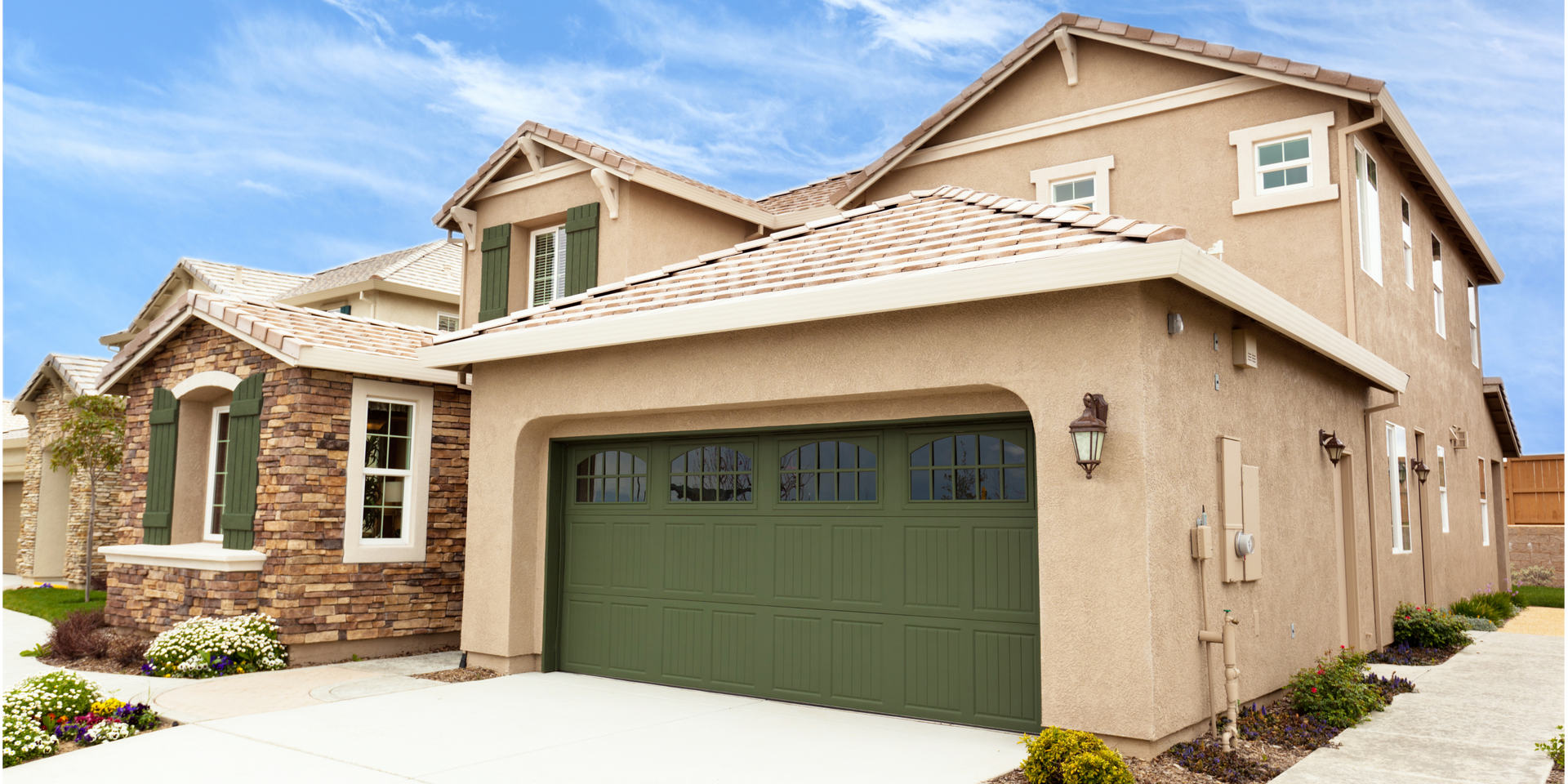
STUCCO
CLASSIC ELEGANCE WITH EXCEPTIONAL DURABILITY
Stucco siding is a popular choice for homeowners in Wisconsin due to its timeless and elegant appearance. One of the main advantages of stucco siding is its durability and ability to withstand the state's harsh weather conditions. It is also low maintenance and can last for decades with proper care. However, it is important to note that stucco siding may be more expensive than other materials and requires professional installation. With the help of a reputable siding contractor in Waupaca, Wisconsin, you can explore energy-efficient stucco options and ensure proper installation for optimal performance. Consider the benefits of insulated stucco siding and sustainable siding materials to make the right choice for your home.
PROS:
- Timeless Elegance: Stucco siding is renowned for its timeless and sophisticated appearance. Its smooth or textured finish exudes charm and character, making it a sought-after option for those who appreciate classic architectural styles. Whether you prefer the rustic allure of Mediterranean design or the clean lines of a contemporary aesthetic, stucco effortlessly adapts to your vision.
- Durability That Lasts Generations: One of the most prominent advantages of stucco siding is its remarkable durability. When properly applied and maintained, stucco can last for generations. It's inherently resistant to moisture, mold, and rot, ensuring that it maintains its elegant appearance year after year. In regions like Wisconsin, where weather conditions can be challenging, stucco stands strong, providing reliable protection against the elements.
- Energy Efficiency: Stucco siding offers inherent energy-efficient properties. Its thickness and composition provide natural insulation, helping to regulate indoor temperatures. This means your home remains cooler in the summer and warmer in the winter, reducing your reliance on heating and cooling systems and resulting in lower energy bills.
- Noise Reduction: Stucco siding can help reduce noise transmission, creating a quieter and more comfortable living environment.
- Low Maintenance: Stucco siding requires minimal maintenance. Its surface can be easily cleaned with a gentle power wash or occasional spot cleaning, saving you time and effort in upkeep. Unlike materials that demand regular painting or staining, stucco retains its vibrant color and finish with minimal effort.
- Variety of Colors, Textures, and Finishes: Stucco offers a range of design possibilities with various textures and finishes and can be tinted with a wide range of colors to match your home's exterior design and personal preferences. You can achieve the precise look you desire, whether it's a traditional rustic texture or a more modern, sleek finish. This versatility allows homeowners to personalize their home's exterior to match their preferred aesthetic.
- Curb Appeal: Stucco siding enhances your home's curb appeal and resale value. Its enduring beauty and timeless charm make it an attractive feature for potential buyers, increasing the overall worth of your property.
- Eco-Friendly Options: Many stucco products incorporate sustainable construction practices, aligning with eco-conscious homeowners' values. Additionally, stucco itself is a natural material that doesn't produce harmful emissions, making it a responsible choice for the environment.
CONS:
- Regular Inspection: Stucco siding requires periodic inspection to identify and address any cracks or damage promptly. Wisconsin's freeze-thaw cycles can cause stucco to expand and contract, potentially leading to cracks over time.
- Moisture Vulnerability: Stucco siding can be vulnerable to moisture infiltration if not installed correctly or if it lacks proper sealing and drainage systems. Moisture issues can lead to mold growth, rot, and structural damage.
- Installation Complexity: Proper stucco installation requires expertise. If not installed by skilled professionals, it can lead to issues such as water infiltration, poor adhesion, and an uneven finish.
- High Cost: Stucco siding tends to be more expensive upfront compared to some other siding options, impacting your budget.
- Color Fading: Over time, stucco siding can experience color fading due to prolonged exposure to UV rays. This may require repainting or recoating to maintain the desired appearance.
- Potential Crack Formations: Stucco is susceptible to cracking, especially in regions with extreme temperature fluctuations like Wisconsin. These cracks may require repairs to prevent moisture infiltration.
- Crack Repair Complexity: While some stucco cracks are relatively easy to repair, more extensive or structural damage can be challenging and costly to fix. Repairs may involve removing and replacing sections of the siding which leads us to the next con on the list...
- Color and Texture Matching: Achieving a seamless repair that matches the existing stucco color and texture can be challenging, potentially leading to visible patches.
- Limited Design Choices: Stucco siding offers fewer design options compared to some other materials, potentially limiting your aesthetic choices.
- Time-Consuming Installation: Stucco installation can be time-consuming, as it requires several layers and drying time between each application. This can lead to longer project timelines.
- Environmental Impact: Traditional stucco production can have environmental consequences, and the manufacturing process may produce waste materials.
- Structural Load: Stucco adds significant weight to your home's exterior, and it's essential to ensure that your home's structure can support the added load.
COST: Stucco is definitely at the top of the budget at a whopping $30 per square foot however you're not going to have to factor in the same percentage in waste like you would with the previous options. A majority of this expense is in the labor.
With stucco, you're not just enhancing your home's exterior; you're creating an enduring and elegant living space that will be cherished for generations to come. Its ability to enhance aesthetics, improve energy efficiency, and provide long-lasting protection against the elements sets it apart as a timeless and practical investment. Still, considerations related to maintenance, installation complexity, cost, and vulnerability to moisture issues in Wisconsin's climate must be taken seriously. Homeowners should carefully assess their budget, climate conditions, maintenance preferences, and aesthetic goals when choosing stucco siding.
CONCLUSION
THE BALANCING ACT: WEIGHING THE PROS & CONS
Choosing the right siding material for your home in Wisconsin involves a careful balancing act of priorities. Each siding option comes with its unique set of pros and cons, catering to various preferences and needs. Whether you prioritize durability, affordability, energy efficiency, or aesthetics, there is a siding solution that can meet your requirements. It's crucial to consider factors like climate, maintenance expectations, budget constraints, and design preferences when making your decision. Additionally, consulting with a reputable siding contractor, like Badgerland Restoration & Remodeling in Waupaca, Wisconsin, can provide expert guidance and ensure a successful siding installation that enhances the beauty, protection, and value of your home.
